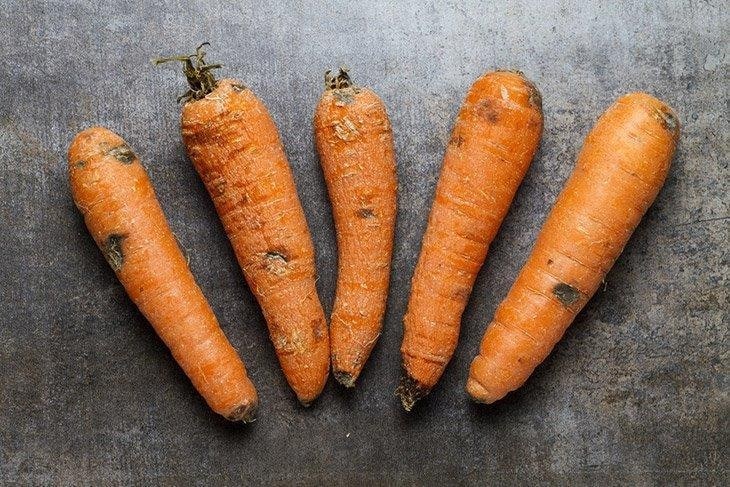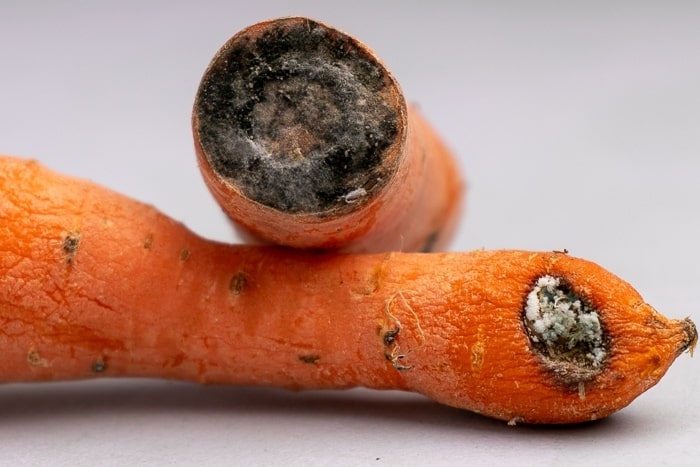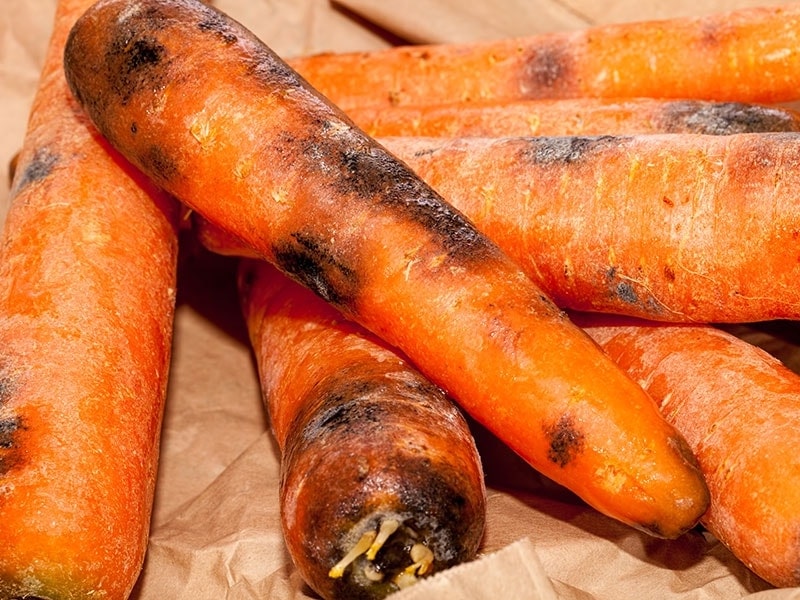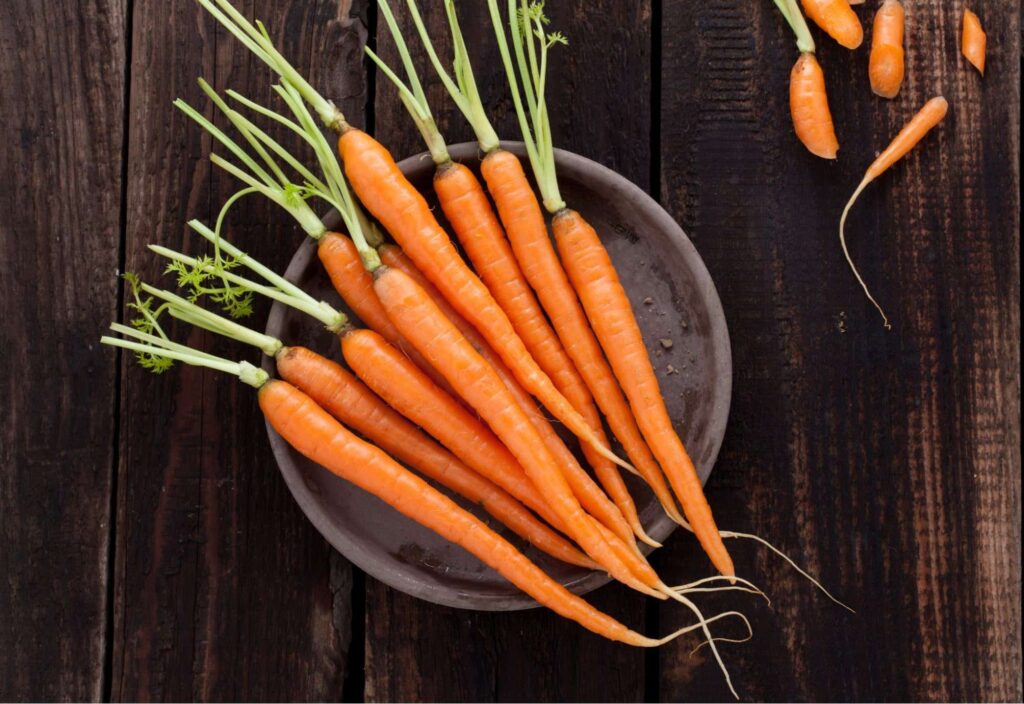So, picture this: I’m in the kitchen, about to whip up a quick lunch salad. I reach for my carrots, ready to add that satisfying crunch to my meal, only to find them peppered with black spots. Talk about a lunchtime shocker!
I double-check, just to make sure I’m not seeing things (spoiler alert: I’m not). Now, what’s a carrot aficionado like myself supposed to do in a pickle like this?
Well, I don my detective cap and dive headfirst into the internet abyss. Hours of scrolling through gardening forums and scientific journals later, I emerge victorious — armed with the knowledge of what’s causing my carrots to go all polka-dotty.
And hey, if you’re anything like me (and let’s face it, you probably are), you’re itching for answers too!
But fear not, fellow carrot connoisseur! I’ve done the legwork so you don’t have to.
Just sit back, relax, and let me spill the beans (or should I say, carrots) on what’s causing those pesky black spots and how to kick them to the curb!
Can you eat carrots with black spots?

You can eat carrots with black spots if the spots are superficial and limited to the surface. However, discard carrots with extensive black spots or signs of spoilage like mushiness or foul odor to avoid potential health risks.
What do black spots on carrots mean?

Black spots on carrots typically indicate pest infestation, fungal infections, or mold growth.
Pest Infestation
Watch out for those pesky pests like carrot rust flies or carrot weevils! They’re the culprits behind those dark spots on your carrots, leaving behind a trail of destruction like tiny veggie vandals.
You’ll spot their handiwork as dark tunnels or scars on the surface, a not-so-pretty sight. And if you’re really unlucky, you might even find some squirming larvae — talk about an unwanted surprise in your salad!
Fungal Infections
Fiendish fungi are also the cunning culprits behind those pesky black spots on carrots, known as carrot black rot. We’re talking grayish-black lesions showing up uninvited on your orange veggie friends, sometimes with sunken areas for dramatic effect.
These fungal infections are like party crashers, spreading fast and ruining the carrot’s bright colorful vibe.
Mold Growth
Mold growth, especially in damp or humid conditions, can turn your carrots into a science experiment gone wrong. If you spot fuzzy or hairy patches, it’s a sign of spoilage and a potential ticket to Tummy Troublesville!
4 Reasons Why Your Carrots Have Black Spots

It’s time to go into the nitty-gritty of what makes your carrots go all dotty and funky!
Carrot Rust Flies
Carrot rust flies are like the uninvited guests at a garden party — they lay their eggs on carrot crops, and their larvae dig deep into the roots, creating a mess of dark tunnels and scars. It’s like they’re redecorating the carrot patch without your permission!
If you’re a gardener, their presence spells trouble for carrot crops, causing serious damage and leaving behind unsightly black spots on the roots. I like to think they love playing games of vegetable vandalism — so watch out for these sneaky critters!
Carrot Weevils
Those sneaky carrot weevils are beetle-like bugs that have a taste for carrot roots. Their larvae are notorious tunnel-diggers, leaving behind black spots and chaos in their wake!
Carrot Black Rot
Carrot black rot is the Freddy Krueger of fungal diseases. Alternaria radicina is the culprit behind this nightmare, haunting carrots in the field and even during storage.
It’s like a horror show on your veggies, with grayish-black lesions and sunken areas that’ll make you think twice before munching on your carrots.
This rot spreads faster than gossip at a family reunion, leaving carrot crops looking like they’ve gone through a zombie apocalypse.
Mold Development
If you leave your carrots lounging in damp or humid spots, they might just throw a moldy party. And trust me, you don’t want them to be invited to that shindig!
Mold loves to crash the carrot scene, especially if they’re sealed up tight in containers or plastic bags. If you spot any black, fuzzy patches on your carrots, it’s time to bid them farewell!
Can you remove the black spots on carrots?

You can remove black spots from carrots. However, you need to do it carefully to ensure food safety.
Here’s how you can remove black spots from carrots safely.
How to Remove Black Spots on Carrots
There are basically 4 ways you can safely get rid of the black spots on carrots.
1. Trim away the black spots.
Grab a pristine knife and get ready to perform carrot surgery! Slice off those unsightly black spots like a pro, making sure to dig deep until you hit the good stuff.
Toss out the yucky bits to avoid any veggie drama and voila! Your carrots are now ready for their starring roles.
2. Scrub the carrots thoroughly.
If your carrot’s only got some superficial black spots, then there’s no need to panic. Just grab a veggie brush or scrubber and give those spots a gentle but thorough scrub!
Then, rinse it under water to wash away the evidence. Even though it’s just a carrot, treat it like a crime scene!
3. Peel off the black spots.
If your carrots look like they’ve been through a rough day at the mud wrestling pit, it’s time for some tough love. Grab your trusty vegetable peeler and go to town on those bad boys.
Peel off the entire outer layer, making sure to ditch the parts that look like they’ve seen better days!
4. Boil the carrots.
If you’re still side-eyeing that suspicious carrot like it’s auditioning for a horror movie with all those black spots and signs of spoilage, fear not! Give it a good scrub, peel off the sketchy parts, and then toss it into a boiling pot of water.
Boiling not only softens it up but also nukes any bacteria or fungi lurking on its surface.
| Planter’s Tip Right after removing the black spots from your carrots, use them right away! This’ll lessen the chances of any more black spots from showing, plus you get to enjoy your carrots right then and there! |
How to Prevent Carrots from Getting Dark Spots

Preventing carrots from rocking the dark spots look demands some serious intervention to tackle potential culprits like pests, funky fungi, and bad storage vibes. Here’s the lowdown on keeping your carrots spot-free.
Proper Cultivation Practices
If you fancy yourself a gardener, then this one’s for you! Here’s the scoop: Practice some crop rotation to keep those pesky pests and diseases from setting up camp in your soil.
Now, keep a close eye on your carrots for any signs of trouble. If you spot any unwanted guests or diseases crashing the party, kick them out pronto!
And remember, give those carrot pals some space to breathe. It’s all about that air circulation, so spread them out and say goodbye to possible fungal infections.
Pest Control and Management
When it comes to safeguarding your precious carrot crops, it’s all about playing defense. Wrap those carrots in row covers or insect nets to keep out unwanted guests like carrot rust flies and weevils — it’s time to put up a forcefield around your veggie kingdom!
But why stop there? Let’s bring in the natural reinforcements.
Cue the beneficial insects and nematodes, nature’s own pest control squad. These tiny warriors will swoop in and take care of those pest populations like it’s nobody’s business — it’s like having your own secret garden army!
Now, if things start getting really hairy and the pests just won’t take a hint, it’s time to unleash the heavy artillery. Break out the insecticidal sprays or traps and give those pests a taste of their own medicine!
But remember, this is the nuclear option — use it sparingly and only when absolutely necessary. With these tricks in your arsenal, you’ll be ruling over your garden kingdom like a pro in no time!
Fungal Disease Management
When it comes to fungal disease management, it’s all about staying one step ahead of the game.
First things first, arm yourself with some disease-resistant carrot varieties. Think of them as your garden’s own superhero squad, ready to fend off fungal villains like carrot black rot.
Now, let’s talk techniques and tactics. Say goodbye to overhead irrigation — it’s just asking for trouble.
Keep that moisture off your carrot foliage to avoid creating a cozy environment for fungal infections.
But hey, sometimes even the best-laid plans need a backup. Enter fungicides.
Think of them as your garden’s secret weapon against fungal invaders. Apply them preventatively or under the guidance of a professional agronomist to keep those fungal diseases at bay.
Proper Harvest and Storage
Timing is everything. Harvest those carrots when they’re at their prime to avoid any post-harvest drama!
Now, once you’ve got those beauties out of the ground, it’s time to treat them right. Handle them with care, like you would your grandma’s fine china.
We don’t want any bruises or battle scars that could let those pesky pathogens sneak in.
And when it comes to storage, it’s all about finding the perfect hideout. Think cool, dry, and well-ventilated — like a carrot spa retreat!
This slows down the aging process and keeps those mold monsters at bay.
Regular Inspection and Maintenance
Regular inspections are your best friend. Keep a close eye on your stored carrots, and be on the lookout for any signs of trouble — dark spots, mold growth, or carrots getting a little too cozy and soft.
Don’t let your carrots get too comfortable in their storage bins or containers. Rotate those babies regularly to keep the airflow going and prevent any moisture from sneaking in and causing trouble!
FAQs
Should you eat carrots with black spots raw or cooked?
You should eat carrots with black spots cooked rather than raw. Cooking carrots with black spots can help kill any potentially harmful bacteria or fungi present on the surface of the carrot.
Additionally, cooking can improve the overall safety of the carrot and reduce the risk of foodborne illness.
How do you know if carrots have gone bad?
If carrots feel slimy or rubbery or have black spots or moldy odor, they’ve likely gone bad. Additionally, visible mold growth on the surface of carrots indicates spoilage.
Why are my carrots turning black in the fridge?
Carrots turn black in the fridge due to excess moisture or exposure to ethylene gas from nearby fruits like apples or pears. Moisture buildup in sealed containers can promote mold growth, leading to discoloration.
Inadequate drying before refrigeration or handling damage can also make carrots more prone to microbial contamination, resulting in blackening.
Is it safe to cut mold off carrots?
It’s not safe to cut mold off carrots and consume the remaining portions. While you may be tempted to salvage the unaffected parts of the carrot, mold can produce toxins that penetrate deep into the vegetable, making it unsafe for consumption.





